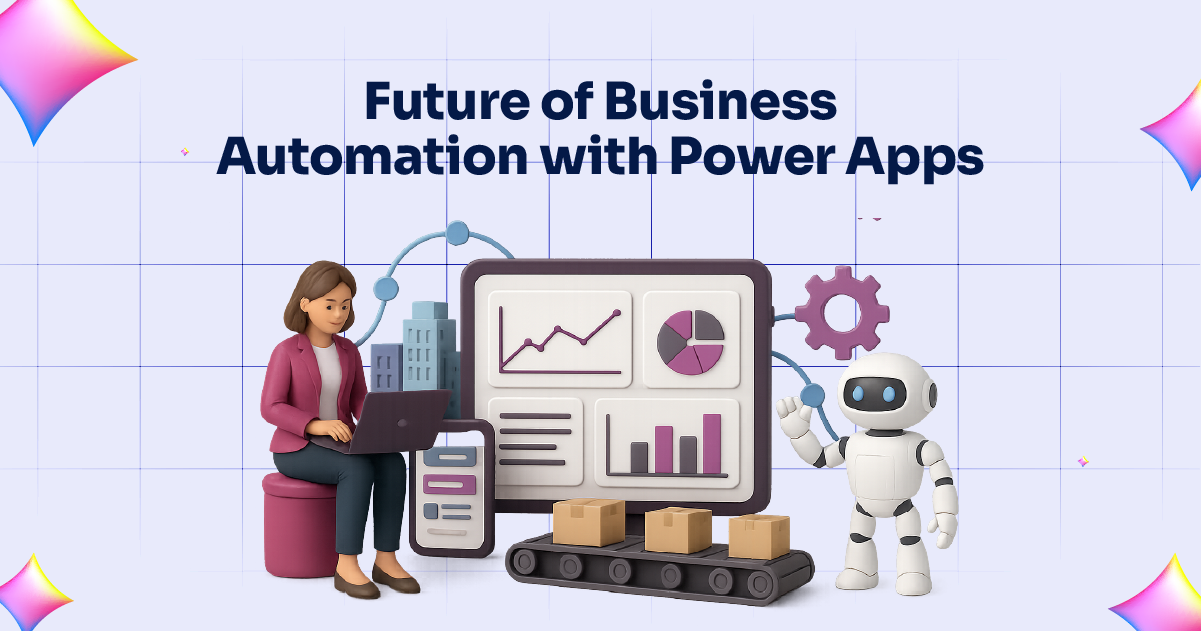
In an era where speed, efficiency, and adaptability define business success, automation has become more than a luxury—it’s a necessity. Organizations across industries are actively seeking smarter, more integrated solutions to streamline operations, reduce human error, and drive growth. One of the most powerful tools leading this digital transformation is Microsoft Power Apps—a low-code application platform that empowers businesses to build custom apps quickly and efficiently.
As we look ahead, the future of business automation is closely tied to platforms like Power Apps, offering immense potential for innovation, scalability, and resilience.
What is Microsoft Power Apps?
Microsoft Power Apps is part of the Microsoft Power Platform, which also includes Power BI, Power Automate, and Power Virtual Agents. Together, these tools enable users—regardless of technical skill level—to build custom applications, automate workflows, analyze data, and even create chatbots.
Power Apps specifically focuses on enabling the rapid development of applications using a low-code interface. This means users can create business apps with drag-and-drop simplicity, integrating seamlessly with Microsoft 365, Dynamics 365, Azure, and hundreds of other data sources.
Why Power Apps is the Future of Automation
1. Low-Code/No-Code Flexibility
The democratization of app development is one of the most significant shifts in the world of enterprise IT. Power Apps makes it possible for business users, not just developers, to create solutions that meet their unique needs. This significantly reduces the time and cost associated with traditional app development, allowing businesses to iterate and innovate faster.
2. Integration with Microsoft Ecosystem
Being part of the Microsoft ecosystem gives Power Apps a distinct advantage. It integrates smoothly with Microsoft 365, SharePoint, Teams, Dynamics 365, and even third-party tools. This makes it ideal for automating routine tasks like approvals, data collection, and inventory management.
For organizations already using Microsoft 365 Managed Services, Power Apps adds an extra layer of value by enabling deeper customization and workflow optimization.
3. Enhanced Productivity and Efficiency
By automating repetitive tasks and enabling real-time data access through custom apps, employees can focus on higher-value activities. Whether it’s simplifying employee onboarding, managing field operations, or tracking project statuses, Power Apps provides scalable solutions that reduce manual workloads and enhance operational efficiency.
4. Cost Savings
Traditional software development is not only time-consuming but also costly. Power Apps significantly reduces development time, enabling faster rollouts and quicker return on investment. Moreover, by automating business processes, organizations can reduce labor costs, minimize errors, and avoid expensive delays.
5. Scalability and Customization
Businesses are dynamic, and their processes evolve over time. Power Apps is designed to scale and adapt. Whether you’re a startup needing basic forms or a large enterprise requiring complex, multi-functional apps, Power Apps can be tailored to meet the scope and scale of your needs.
Use Cases of Microsoft Power Apps in Business Automation
1. Employee Onboarding
Automate the onboarding process by creating an app that manages tasks like collecting documentation, assigning IT equipment, and tracking training progress—all while integrating with Microsoft Teams and SharePoint.
2. Customer Service
Build customer-facing apps that allow users to raise tickets, track service status, and access support resources. Integration with Power Automate ensures that escalations and responses are timely and efficient.
3. Field Service Management
Develop mobile apps for technicians to receive job orders, update status, collect signatures, and sync data with central systems in real time, even in offline environments.
4. Inventory and Asset Tracking
Automate the management of inventory levels, restocking schedules, and asset check-ins/check-outs using barcode scanning capabilities and integration with Excel or SQL databases.
Power Apps + AI = The Next Frontier
Microsoft has been integrating AI capabilities into the Power Platform, allowing developers to infuse intelligence into their apps with features like AI Builder. This lets businesses analyze sentiment, recognize text in images, and predict outcomes—all without writing complex algorithms.
As AI continues to evolve, Power Apps will likely play a central role in bringing intelligent automation to the mainstream. Imagine apps that not only process data but also provide actionable insights and recommendations, adapting dynamically to user behavior.
Security and Governance
Automation should never come at the cost of security. Fortunately, Power Apps inherits enterprise-grade security features from Microsoft Azure and Microsoft 365. Admins can enforce data loss prevention (DLP) policies, monitor usage, and control access to sensitive information. With centralized governance, organizations can foster innovation without losing control.
Getting Started with Power Apps
For organizations looking to start or scale their automation journey, leveraging Microsoft 365 Managed Services can be a game-changer. Expert support helps ensure that your Power Apps environment is optimized, secure, and aligned with your business goals. From planning and app development to deployment and training, a managed services provider can accelerate your digital transformation.
Conclusion
The future of business automation is no longer on the horizon—it’s already here, and Microsoft Power Apps is leading the way. By making app development accessible, scalable, and intelligent, Power Apps is empowering organizations to automate like never before.
As technology continues to evolve, the organizations that embrace platforms like Power Apps today will be the ones best positioned for success tomorrow. Whether you’re aiming to optimize internal workflows, improve customer experiences, or drive innovation, Power Apps offers the tools and flexibility you need to thrive in a digital-first world.
